3rd June 2014
Tomb Measurement 2-Day Workshop with Dr. Lai Chee Kien
NB: There has been a change in starting time for Session one at NLB from 1 pm to 1.15pm.
Places available: :30
Session One : 1.15pm -4pm, Saturday 14 June 2014
Location: Imagination Room, 5th floor, National Library, Victoria Street
Session Two 3.30pm- 6.30pm, Saturday 21 June 2014,
Location: Bukit Brown Cemetery Gate (meeting point)
1) Description:
From 2011-2013, several architecture students supervised Dr Lai Chee Kien have measured tombs at the former Bukit Brown Municipal Cemetery as an attempt to record the historical and unique types and hybrids found in the cemetery, now under threat of road development. This workshop aims to share the basics of measuring objects and buildings, but with a focus on the experiences of measuring tombs at Bukit Brown. It is hoped that design students and members of the public can learn the basics of tomb measurement, and in future volunteer to record other significant tombs, or those of deceased relatives. These will serve as archival records in the future for all.
2) Scope
14 June 2014 (Theory session)
(a) Introduction to measuring objects and buildings
(b) Methods, tools, and practices
(c) Tomb types and features
(d) Inhouse practice session
21 June 2014 (Practical session at Bukit Brown)
(e) Introduction to Bukit Brown
(f) Groupwork: measuring a small tomb
3. Things to bring (theory session)
(a) A4 clipboard
(b) Measuring tape (5m or more)
(c) Pen or pencil (paper will be provided)
[Items for practical will be discussed at theory session]
4. Pre-requisites
(a) Participants who have attended guided tours of Bukit Brown cemetery would be appreciated.
(b) Participants who have prior 3D drawing knowledge (architects, designers, architectural and design students) would have an advantage.
(c) Participants are required to attend both the theory and practical sessions.
Disclaimer: By agreeing to participate in the practical session held at Bukit Brown Cemetery, I understand and accept that I must be physically fit and able to do so. To the extent permissible by law, I agree to assume any and all risk of injury or bodily harm to myself.
To register, please email latest Wednesday 11 June’2014 to : a.t.bukitbrown@gmail.com
with Subject; Registration for Tomb Measurement Workshop.Participants to indicate name, IC, contact number, email and relevant interest/experience as stated in 4 (a) and (b). Successful applicants will be informed by email.
About Dr. Lai Chee Kien:
Dr Lai is a registered architect, and graduated from the National University of Singapore with an M Arch. by research [1996], and then a PhD in History of Architecture & Urban Design from the University of California, Berkeley [2005]. He researches on histories of art, architecture, settlements, urbanism and landscapes in Southeast Asia
 Dr. Lai Chee Kien of the documentation team (photo: Claire Leow)
Dr. Lai Chee Kien of the documentation team (photo: Claire Leow)
Disclaimer: By agreeing to take walking tours of Bukit Brown Cemetery, I understand and accept that I must be physically fit and able to do so.To the extent permissible by law, I agree to assume any and all risk of injury or bodily harm to myself and persons in my care (including child or ward) Useful info here: Getting There/游览信息
Sun 8 June’14 9am – 11.30am Meeting place: At the Lor Halwa Main gates at Bukit Brown
Sikh guards are a unique part of Singapore history, and the Sikh guards of Bukit Brown are our unique heritage. They were favored by the British and the Chinese alike and provided a snapshot of how the Chinese community evolved to adopt other local cultures, thus becoming more Singaporean. Join Peter Pak and Ishvinder Singh as they take you on a visit of a Major, a tomb with a Sikh guard engulfed by a tree, the Sikh guards protecting the largest tomb in BB, the iconic Sikh guards of Chew Geok Leong and other Sikh guards that we may stumble upon as we get “lost” in Hill 3. If you have a FB account please register here. No worries if you don’t, just turn up. Your Guides: Listen to Ish in Search of a Shared Heritage: Ishvinder Singh at TEDxYouth@Singapore http://www.youtube.com/watch?v=9LxxT00CtBo Read about Sikh Guards of Bukit Brown by Peter Pak. Further reading on Sikh Guards : Reputation: The Guardians of the Spirit World Bukit Brown-
by Ang Yik Han
Cheok Hak Leng (石学能) died in 1929 at the age of 34. His father was a rice merchant and he studied in Chong Cheng School. After leaving school, he founded Seng Cheong Sawmill with two other partners. He was the firm’s general manager.
It was mentioned in an account of his life that he joined the Tong Meng Hui in Singapore (Lim Nee Soon’s list of Tongmenghui members does not include his name, unless he joined under a pseudonym). Given that the Chinese Revolution took place in 1911 when he was only 16, he would have been a very young member.
On his tomb, a pair of couplets.
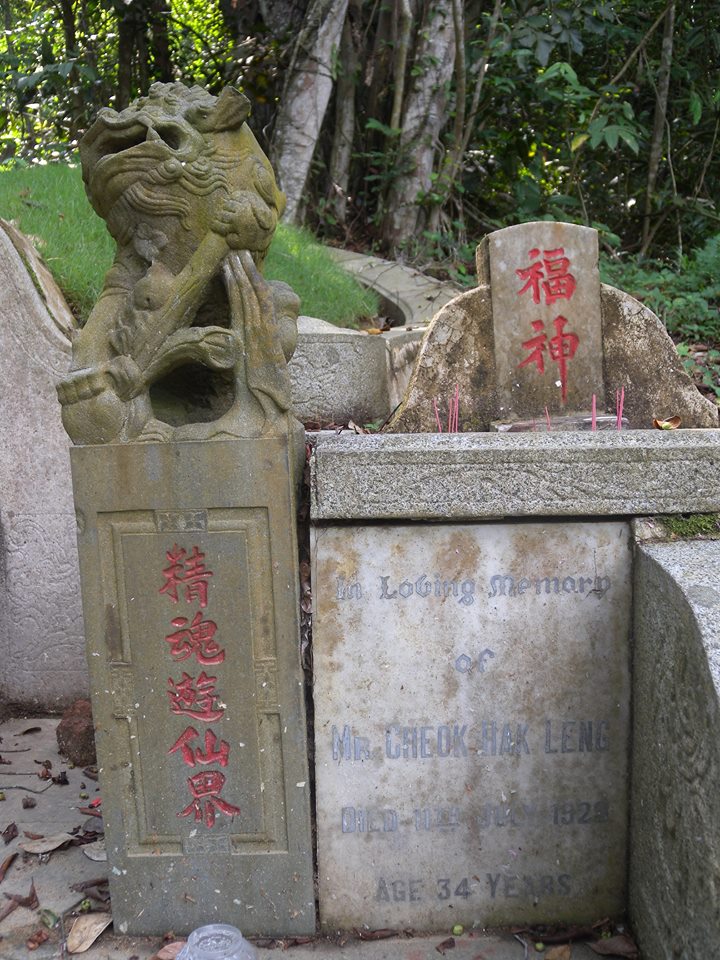
精魂游仙界 (photo Yik Han)
精魂游仙界
The immortal spirit wanders about the heavenly realms
金尸埋俗尘
The corporeal body lies buried in the mortal world
A footnote:
8 December 2012
Straits Time: Life!
Meaningful to find ancestors’ tombs
Melissa Sim’s article Finders Of Long- forgotten Tombs (Sunday Life!, Dec 2) was unique and interesting.
I had long wanted to find the tomb of my grandfather, who died in 1929 and was buried at the Bukit Brown cemetery. When the Land Transport Authority announced its plans last year to build a highway that will cut through the cemetery, my interest was reignited.
Armed with a copy of the register of burials from the National Archives, I made my way to the cemetery full of hope of locating my grandfather’s grave. How wrong I was. Bukit Brown is a massive place with no proper signs and directions, making it difficult to find ancestors’ tombstones.
It was during my second trip there in January this year, after a futile attempt the previous month, that I discovered not only my grandfather’s tomb but also those of his two brothers adjacent to his.
All this was made possible through the assistance of Mr Raymond Goh, who was featured in Ms Sim’s article.
Mr Goh said: “This is my country, it’s worth fighting for because my ancestors are here.” I echo that statement.
Bennie Cheok
—————————-
NB: Bernie Cheok is a grandson of Cheok Hak Leng
(The tomb is at Hill 3, up the track after Tan Chor Lam’s grave)
Date: Saturday, 7 June’14, 2 pm – 4 pm
“As part of Post-Museum’s participation in the group exhibition Unearthed, Woon Tien Wei will speak about our efforts regarding Bukit Brown, as well as our artwork on show (The Bukit Brown Index).
Peter Chen will also be speaking at the same session, on his photography work about Bukit Brown and Tanjong Pagar Railway Station.
The talk is free and will be held in the Glass Hall at the Singapore Art Museum.
Please register with Singapore Art Museum at http://www.eventbrite.sg/
About the exhibition :
Post-Museum will be exhibiting 8 works from The Bukit Brown Index in Unearthed.
Mar 21 – 6 Jul : 10am – 7 pm
Unearthed seeks to investigate our relationship with Earth and the natural world, and charts SAM’s ( Singappore Art Museum) new direction in encompassing and presenting projects and practices where art intersects with other disciplines and modalities. Drawing on works from SAM’s permanent collection as well as private collections, the exhibition at SAM offers an insight on how artists in Singapore view and respond to the natural world, coming from and living in such an urban and built-up environment.
The other artists who are in the exhibition include Lucy Davis, Debbie Ding, Ho Tzu Nyen, Donna Ong, Ezzam Rahman, Robert Zhao Renhui, and Twardzik Ching Chor Leng.
[Image: Installation view of Bukit Brown Index #98: List of Names of the Deceased to be Exhumed to Make Way for the New 8-Lane Road through Bukit Brown and Seh Ong Cemeteries (Unclaimed Tombs as of 1 March 2013) Handwritten by Members of the Public]
by
Cherlyn Lee Suet Yean
I am a Junior College student who loves history and writing poetry. To me, history is a grand story with so many interesting details waiting to be discovered. In my free time, I love taking long walks around Singapore, letting my feet absorb the atmosphere of different places. I learn so much about Singapore’s history that way.
Naturally, I am interested in Bukit Brown because it is full of history. In fact, I went there earlier this year. But amidst all the tombstones, there was one that held a special resonance for me—the tombstone of Khoo Seok Wan. He was a poet and a scholar, and his life story is particularly fascinating because it contains all the vicissitudes of life.
I became interested in visiting Khoo’s tombstone after I attended an excellent exhibition on him at the National Library. He was born rich but became poor, and died of leprosy. But what really struck me was the beauty and immediacy of his poems, written in classical Chinese style. He is refreshingly honest about his poverty, and his poems chronicle details of his daily life very poignantly.
I suppose I was also was able to identify because I write poetry. I enjoy writing poetry because I get to express myself, and it is a way to channel my emotions. So I decided to visit Khoo’s grave as a pilgrimage to seek inspiration, and to pay homage to a great poet.
For me, the poem of his that I loved most was “Reflections on Building my Grave”. It is by an immigrant who has reconciled himself to the fact that there is no return to the motherland, and his characteristic honesty (with himself) can be seen. He also reconciles himself to inevitable change, and the line “年年新綠到天南“, as much as it describes how grass will grow yearly around his grave, is a statement that accepts change. This is particularly fitting given the change that is happening now, with a road being constructed through Bukit Brown.
In fact, I recited this poem by his tombstone because it felt right to do so, like completing life’s cycle. In his acceptance of dying in a foreign land that has become home, there is perhaps a larger acceptance of change. Given that the highway will be constructed through his tomb, it is perhaps a way of sending him to his final rest. And this is fitting because of the way he stoically endured through the vicissitudes of life with courage and dignity.
This is my tribute to Khoo Seok Wan:
Visiting Khoo Seok Wan’s Grave
As I enter, a tripod covered with verdigris promises
That if I pause long enough, its invisible
Camera will capture me against a hill of tombs.
This afterimage will bewilder passing cars.
At Khoo’s burial mound I recite
“Reflections on building my grave”.
Translated, its crow-squawked syllables
Hover in the somnolent air. A creased map
Guided me here, amid the river of red
Inscriptions I cannot read.
The highway blueprint that sent in
An army of excavators must have been
A summons from the dead. Otherwise I
Would not have come to you
With a broom and a book of your poems.
“Reflections on Building my Grave” by Khoo Seok Wan
(translated by Shelly Bryant from the NLB exhibition)
in sea and on hills
little space even for my abode
how then may these buried bones
leap over the Sword Pond
even were you to call a third time
I will have no hope of rising
from Singapura’s soil [Xing zhou]
when I fall, at last, into repose
a petal brushes my headstone –
another butterfly repeats life’s circle
yet even in these grave markers
styles alter with time
like grass growing anew
in its season
with each passing year
changes again touch
our southern home
Editor’s note: Khoo Seok Wan was exhumed on 12 March 2014, with his grandson and his great grandsons in attendance.
Disclaimer: By agreeing to take walking tours of Bukit Brown Cemetery, I understand and accept that I must be physically fit and able to do so.To the extent permissible by law, I agree to assume any and all risk of injury or bodily harm to myself and persons in my care (including child or ward)
Useful info here: Getting There/游览信息
Friday 18 April, 9am – 11.30am. Meeting place: At the Lor Halwa Main gates at Bukit Brown
Fabian and Steven will be guiding a tour on the Straits Settlement and life in the early days in Singapore. Get enriched by their stories of how pioneers, revolutionaries, missionaries and merchants alike settled in Singapore.
If you have a facebook account please register here . This is to help us keep track of numbers turning up
Sunday 20 April, 9am – 11.30am. MEETING POINT: Junction of Lorong Halwa, Kheam Hock Road and Sime Road
What makes Bukit Brown so fascinating is the many layers of history academics and amateurs alike have uncovered. This is where Chinese pioneers were buried between 1922 and 1973. Their lives – prosperous and paupers – paint a society that blossomed after Stamford Raffles landed and made this part of the Straits Settlements, a gem in the British empire in the Far East. The links to Penang, Malacca and Johor speak of the colonial empire. The links to Java and Sumatra tell of the maritime empires under the British and the Dutch. The lives of the revolutionaries and reformists speak of a struggle for identity with the fall of Imperial China.
In the 1940s, this was site of fierce battles involving British (4th Suffolks) and Indian (Royal Deccan Horses) forces, near a village of Chinese and Malay civilians had lived.
Your guides are Claire, Ish and Yik Han. Together they will help piece together the importance of our multifaceted history laid bare in a cemetery. We welcome anyone with knowledge of personal stories to share them with us on the trail.
NOTE: A documentary film crew will also be attending the tour and filming. By agreeing to the tour, you agree to be on film. We thank you for your understanding as we agreed to the filming as part of the outreach to raise awareness of this historic site.
If you have a facebook account please register here
“We guide rain or shine or exhumations.” – we urge you to wear sensible shoes, carry a bottle of water, put on insect repellent, and come with an open mind as we explore together. We share and talk as we walk, and learn from each other. Our walking tours are meant to be learning journeys, for both participants and guides. We believe in building communities and growing organically.
Sunday 20th April, 9am – 12pm Mandarin Guided Walk with Walter Lim
武吉布朗中文导览
丘菽园是家喻户晓的诗人报人,他创办天南与振南两份报刊
By Sugen Ramiah
The Qing Ming festival, or tomb sweeping day, is observed by the Chinese worldwide. It is a day for them to pay homage to their ancestors, either by visiting graveyards, columbariams or ancestral tablets in ancestral halls.
The actual day falls either on the 4th ot 5th of April, but families have a window of ten days before or after the actual day to conduct Qing Ming. This year, I was fortunate to have been able to observe Qing Ming in Bukit Brown and other locations.
Qing Ming, has many stories to its origin, but is mainly observed as an act of being filial and for geomancy (feng-shui) reasons. The Chinese believe that the bones of their ancestors and the lives of the descendents are inextricably connected. For abundance in wealth and happiness, firstly, one has to be filial. Secondly, there has to be a good flow of Chi (positive energy) on the forecourts of their ancestors. During the dry season, the foliage clogs the drainage causing an obstruction to the flow of water. During Qing Ming, the drainage is cleared, to allow the flow of water (Chi) onto the forecourt of the tomb. Qing Ming is also a perfect opportunity for extended family members to get together amidst busy work/family commitments.
Descendents set off as early as first light, to wash, sweep, and weed the tombstones. Inscriptions on the headstones are then re-inked using red or gold paint. A stack of coloured paper or a stone is placed on the headstone to signify that the dead is not forgotten. The paper is also scattered on the mound of the grave. This recalls how an emperor from the Han Dynasty in China could not find his parents’ tomb after he returned from war. He was then told to throw five coloured paper into the air and where they lodged, that was the location of his parents’ tomb.
Two sets of offerings are prepared by the families. First set is for the earth deity by the side – a pair of candles are lit, food and incense offered to the Tu Di Gong who is the guardian of the tombstone. Paper money is also burnt as a form of offering.
Second set is for the deceased – a pair of candles are lit, offerings of tea, fruits, favourite food, and longevity cakes are placed on the tombstone altars. Incense sticks are firstly offered to long departed ancestors and subsequently to the deceased. Incense sticks are placed in an urn and sometimes around the mound, and then descendents wait for the deceased to ‘finish’ their meal Sometimes during the wait, incense sticks are offered to neighbouring tombs – recalling the days of the kampong spirit.
Once approval has been given through the moon blocks or coins, offerings of hell notes and silver paper, clothes, shoes and even latest technological gadgets such as the ipads are burnt for the deceased. Sometimes the required items are packed in a paper treasure box, sealed with the name of the ancestor and burnt for them exclusively. To conclude, tea or any form of liquid is poured around the offering to “secure” the area of the burnt offerings, so as to avoid invasion by other wandering spirits.
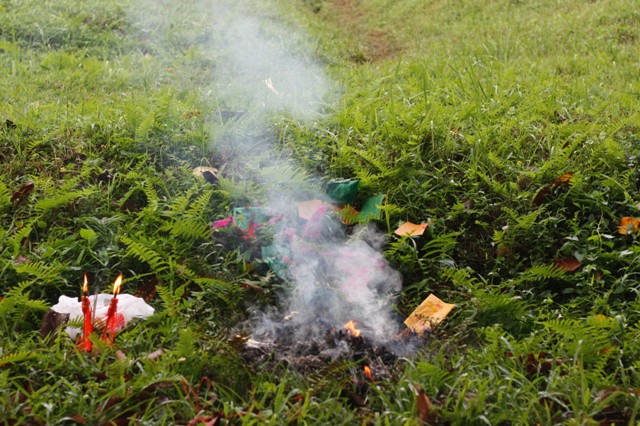
Simple offerings of tea and candy by a woman who comes here yearly to pray for her infant aunt who died during the war. The infant’s burial was not registered so the exact location of plot is unknown.(photo Sugen Ramiah)
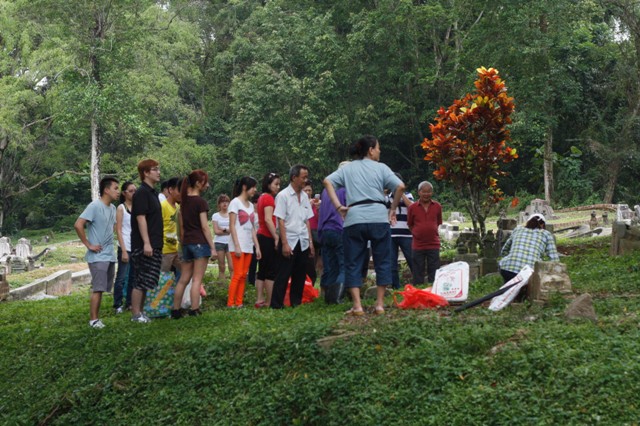
The Ng Family has to charter a bus to transport the entire family for Qing Ming (photo Sugen Ramiah)
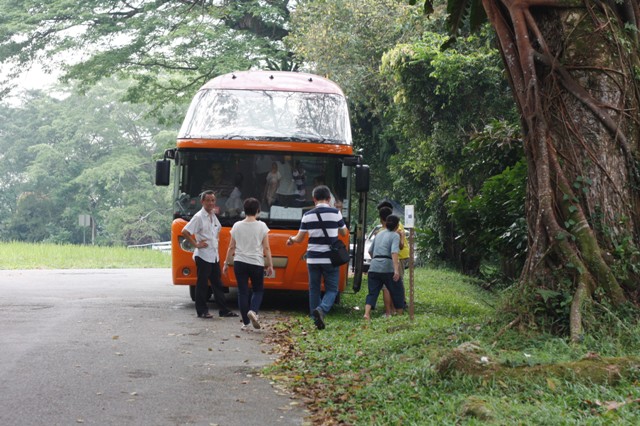
The Ng Family has to charter a bus to transport the entire family for Qing Ming (photo Sugen Ramiah)

A young boy from the Pek Family, who looks forward to Qingming annually, as he gets to visit the tomb of his Lau Yeh (Great grandfather) and meet his cousins. Photo taken at the tomb of his Great Grand Father at Hill 3 (photo Sugen Ramiah)
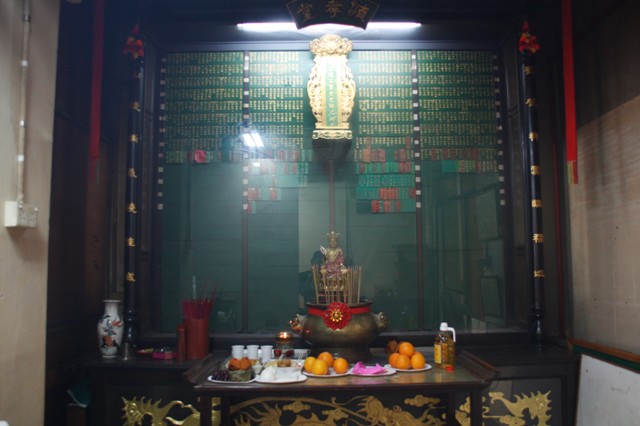
Descendents observing Qing Ming in a less taxing environment at the Cantonese Ancestral Hall of the Singapore Hok San Clan Association (photo Sugen Ramiah)
It has been a rewarding experience, to learn from family members on how they up hold traditions that has been handed down to them. All they hope is that these traditions will be carried on by the generations to come and that their ancestors will not be forgotten. I will close with a quote that is close to my heart.
“To acknowledge our ancestors means we are aware that we did not make ourselves that the line stretches all the way back, perhaps to God; or to Gods. We remember them because it is an easy thing to forget: that we are not the first to suffer, rebel, fight, love and die. The grace with which we embrace life, in spite of the pain, the sorrow, is always a measure of what has gone before. ” – Alice Walker
***
Sugen Ramiah is a teacher by training and his interest includes observing and documenting Chinese festivals and rituals conducted by temples.
Read his blog posts on Salvation for Lost Souls here and here
Read about the tombkeepers’ Qing Ming here
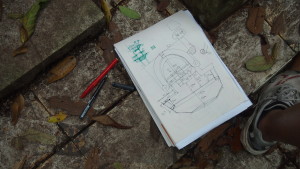


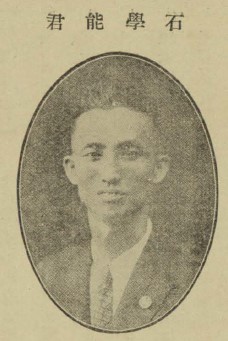



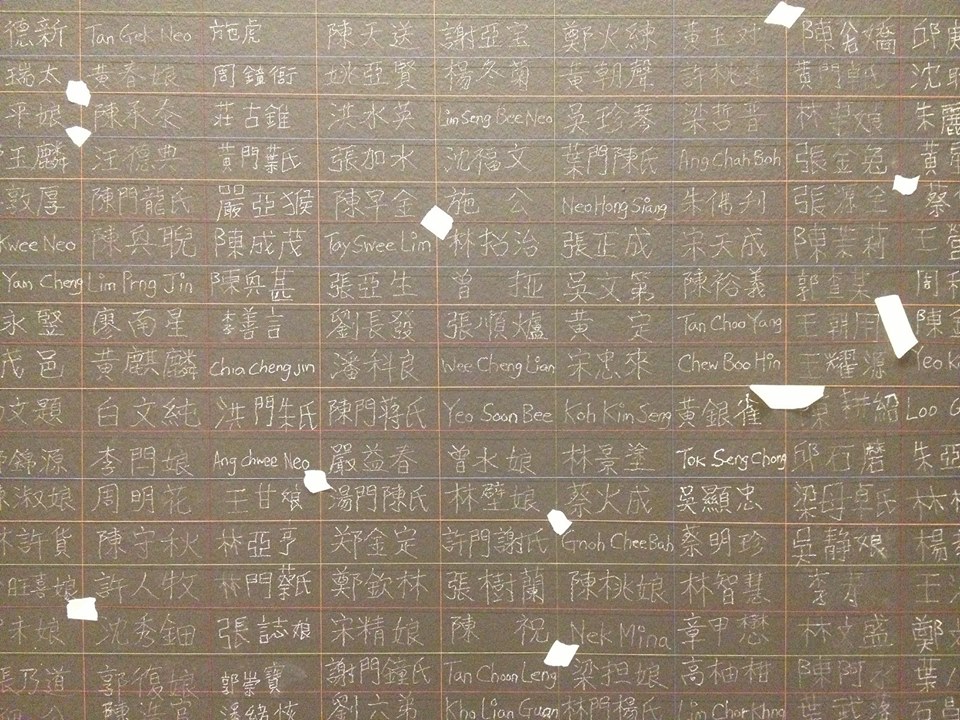


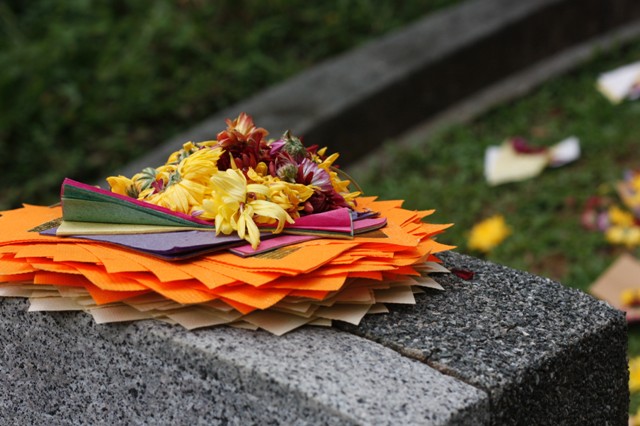





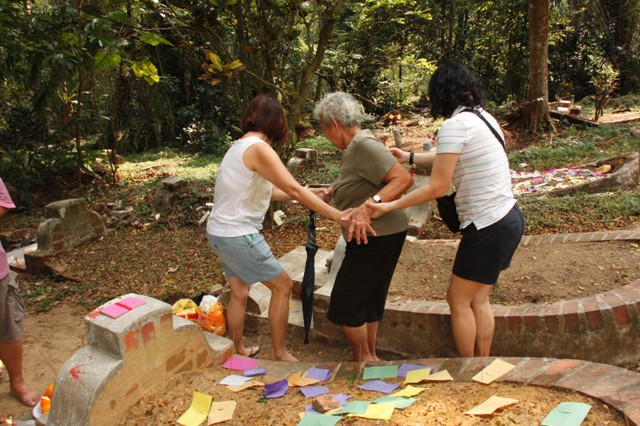


Recent Comments